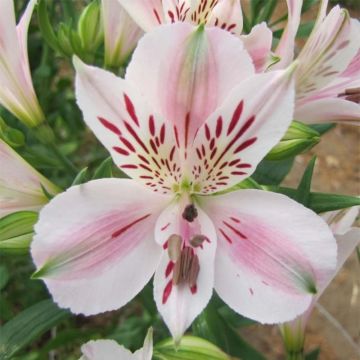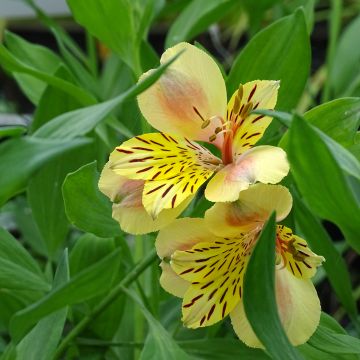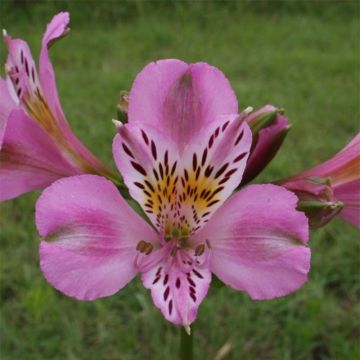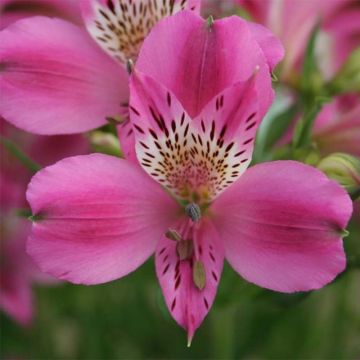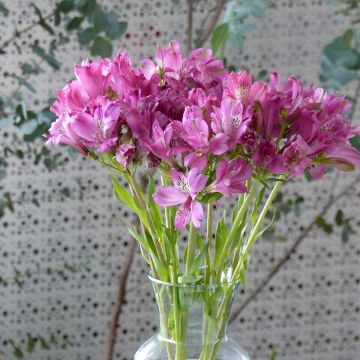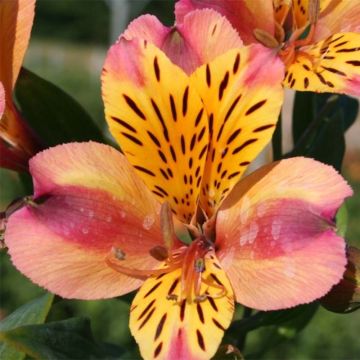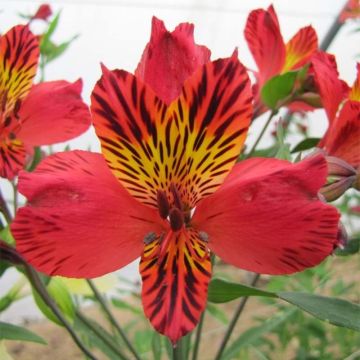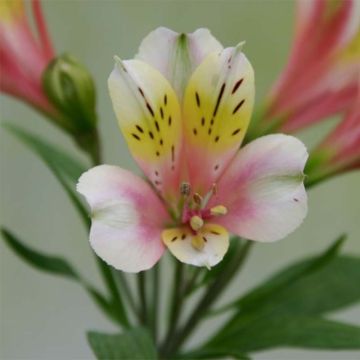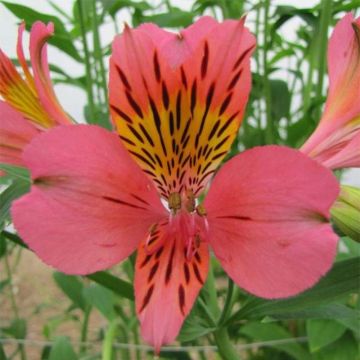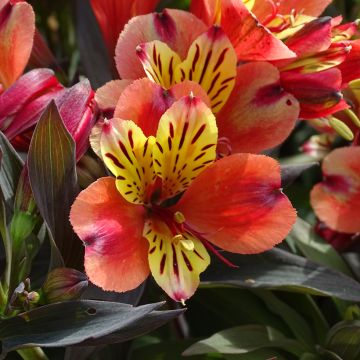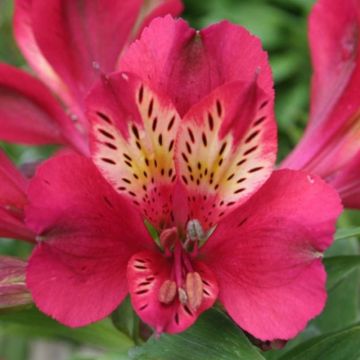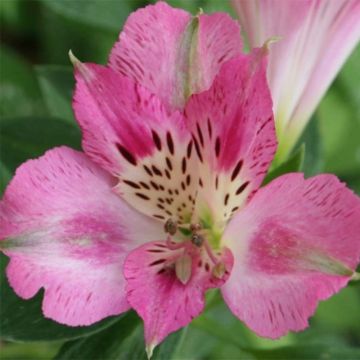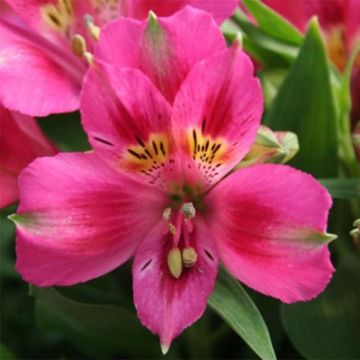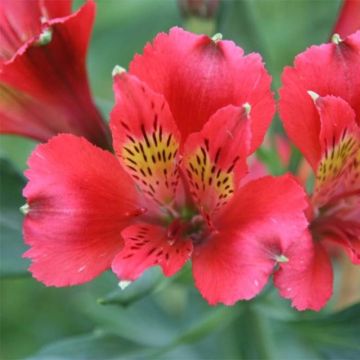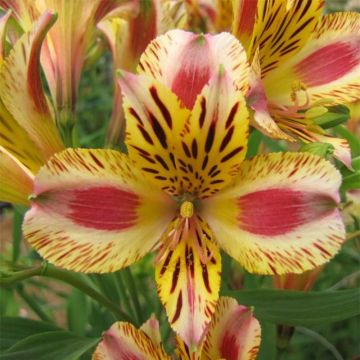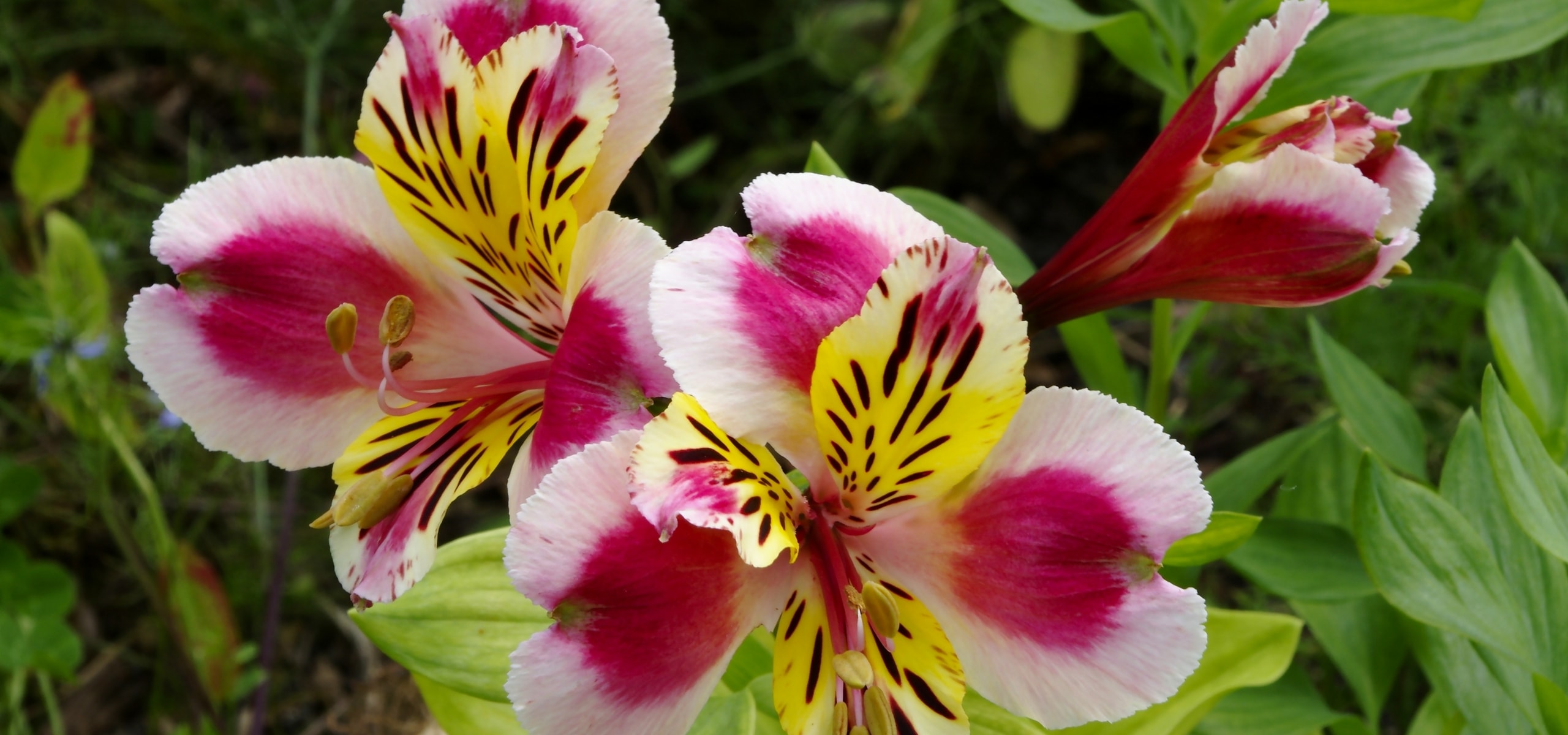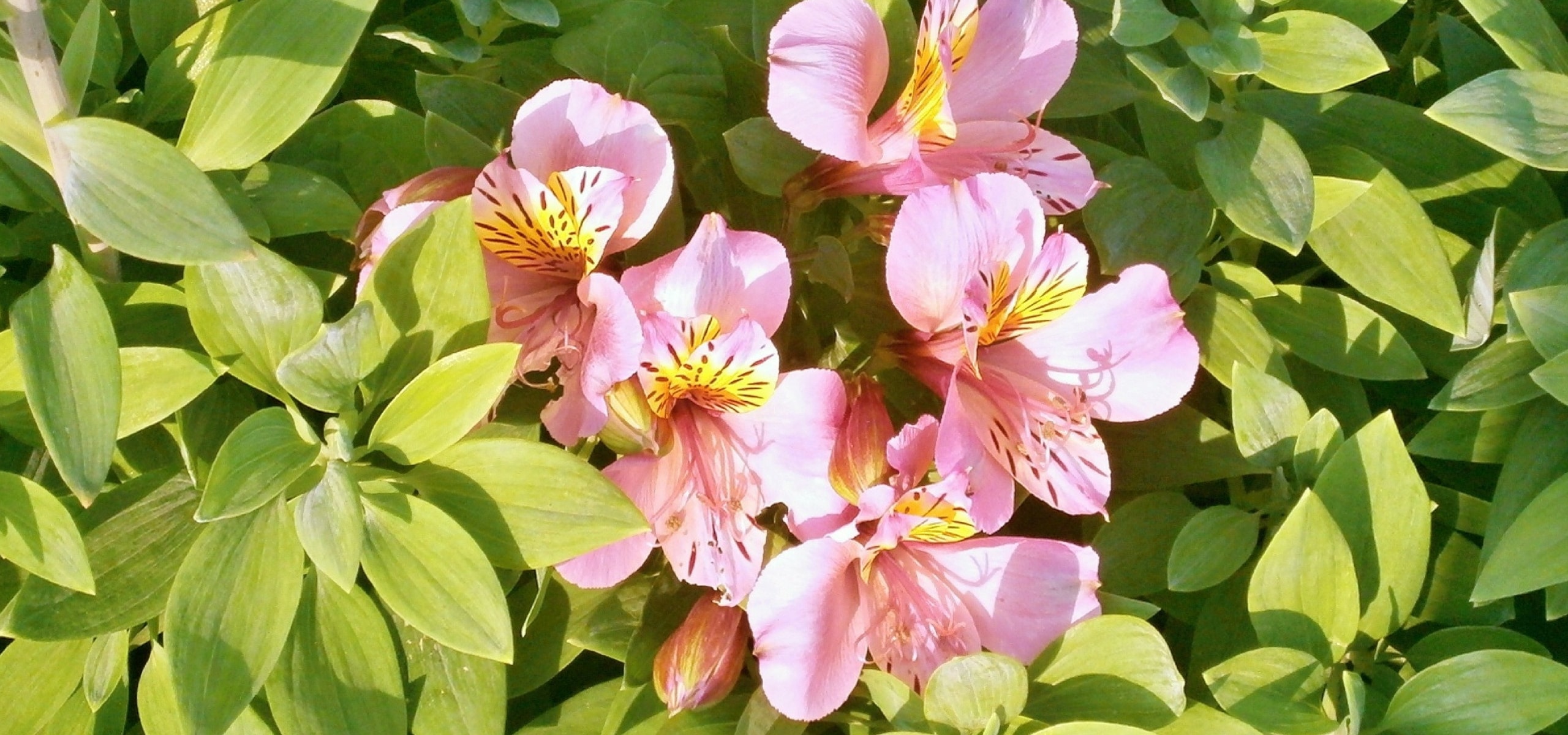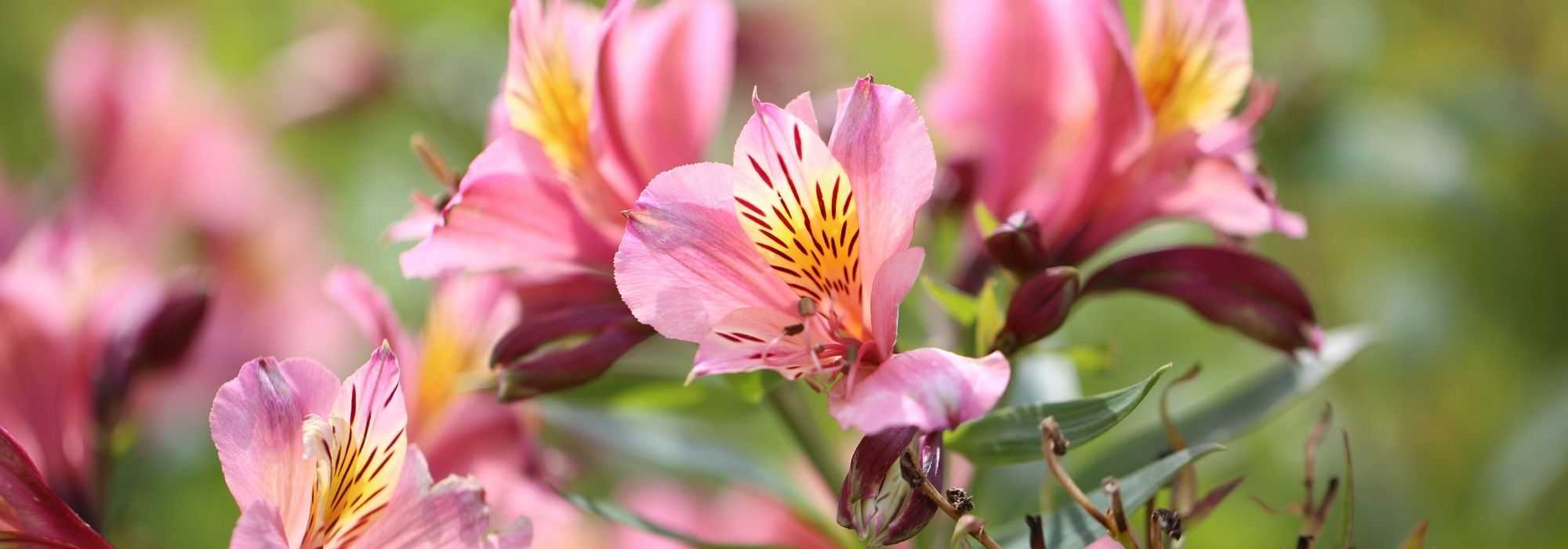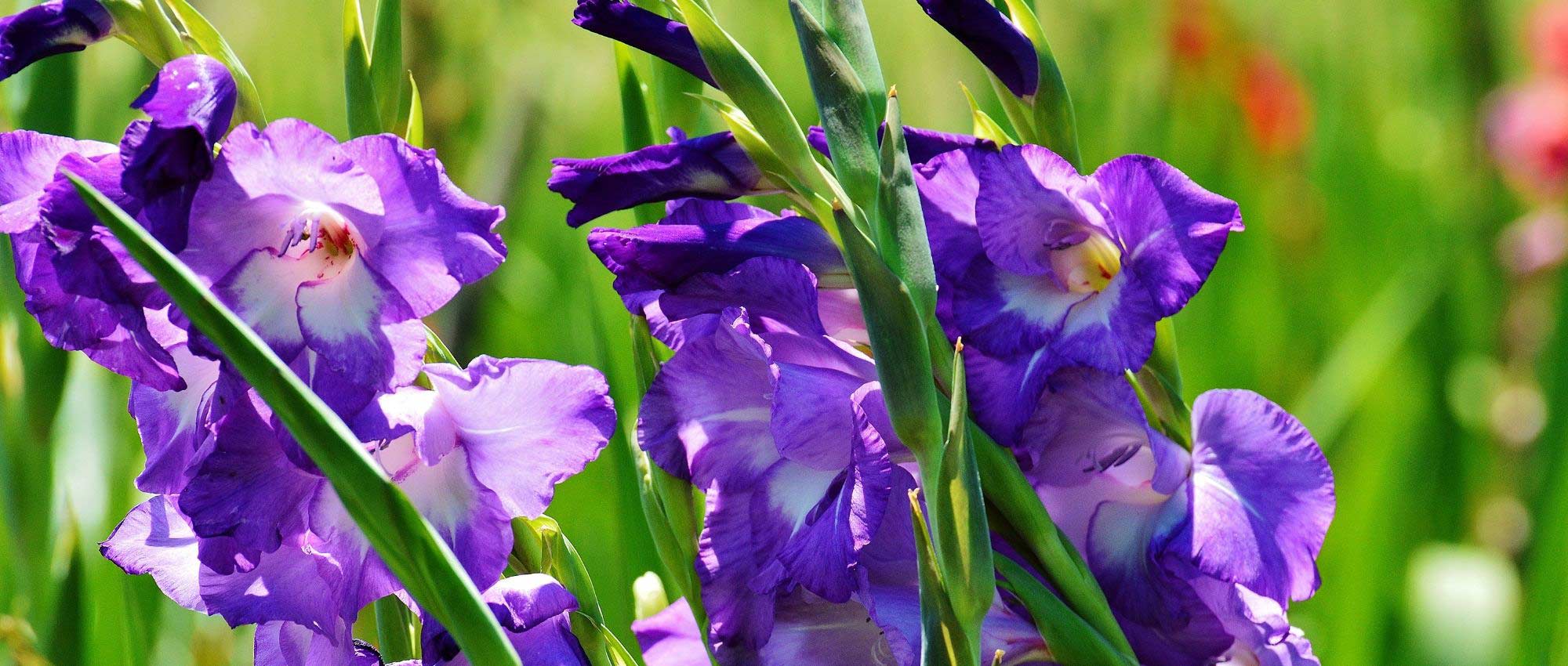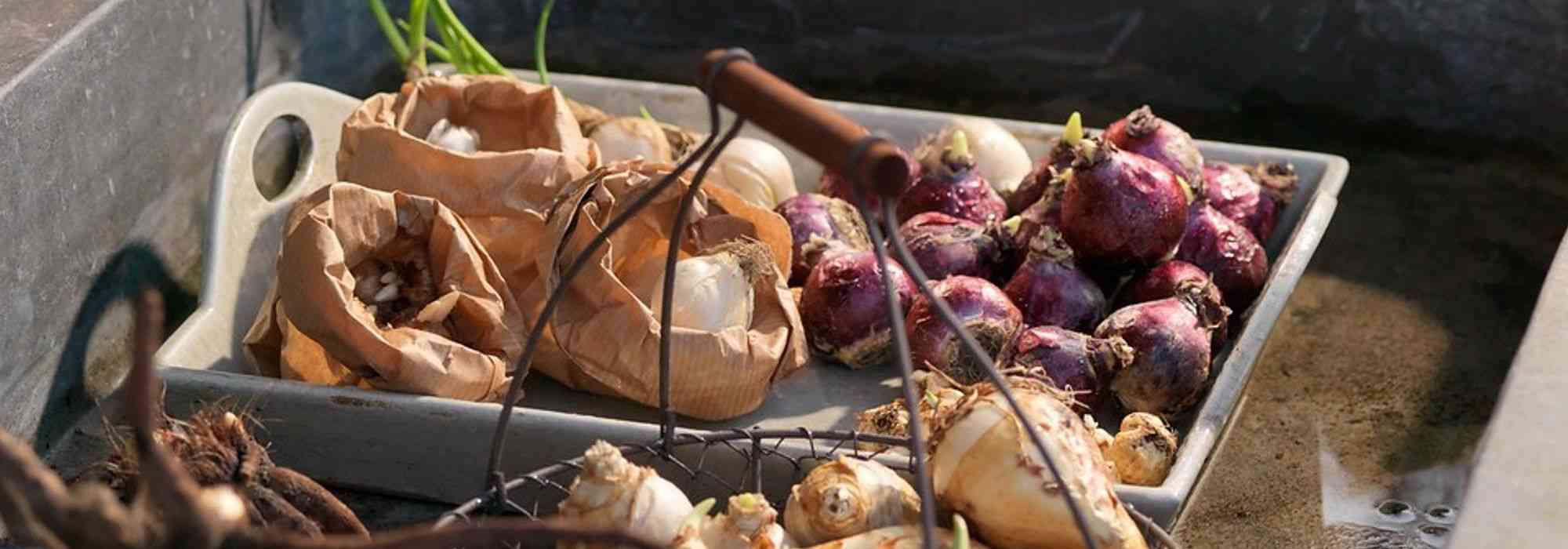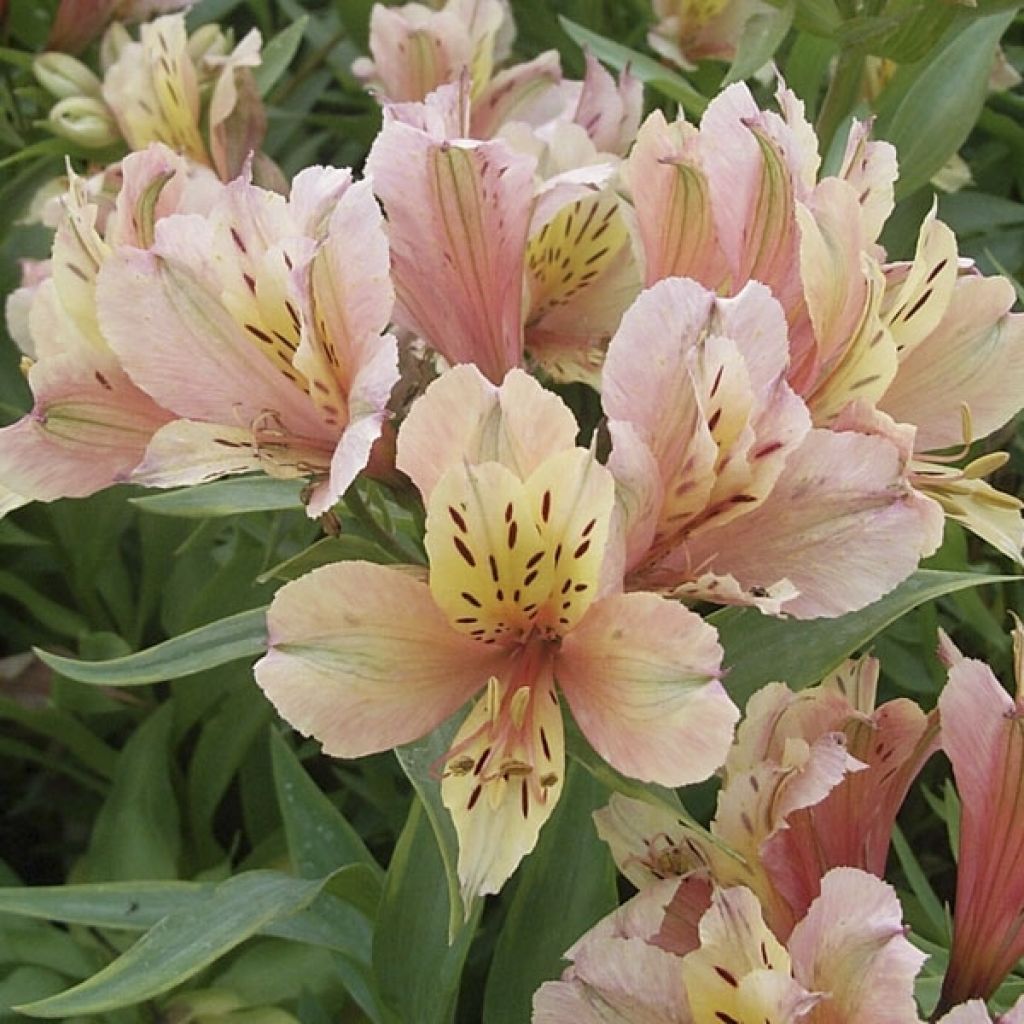

Alstroemeria Inca Ice - Peruvian Lily
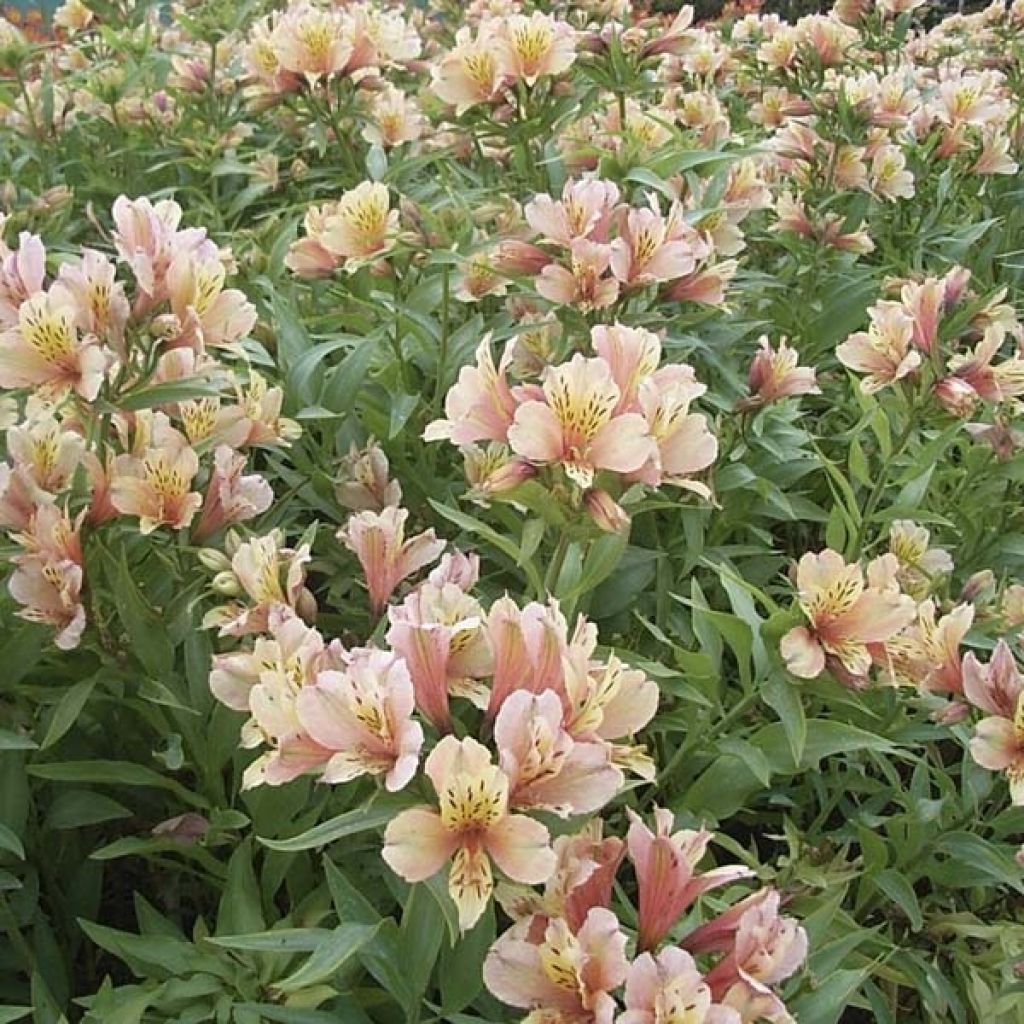

Alstroemeria Inca Ice - Peruvian Lily
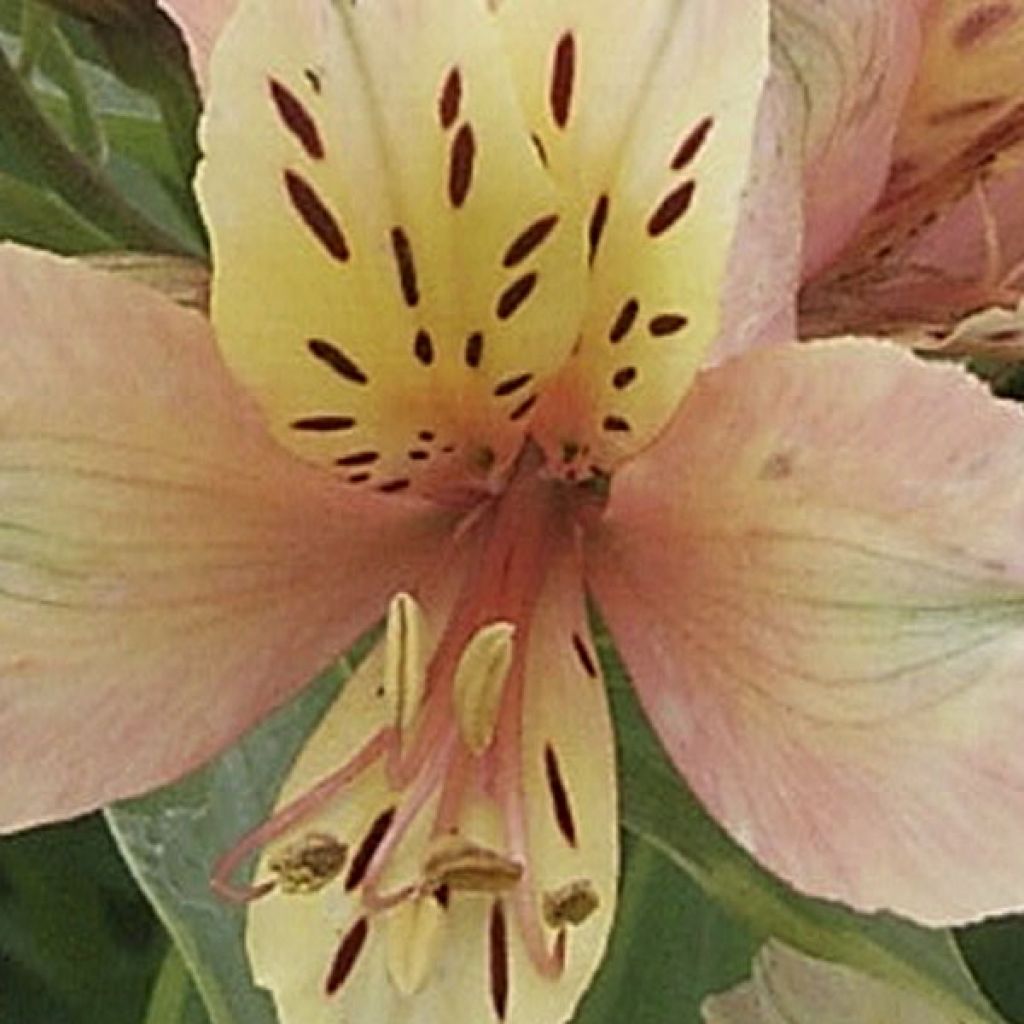

Alstroemeria Inca Ice - Peruvian Lily
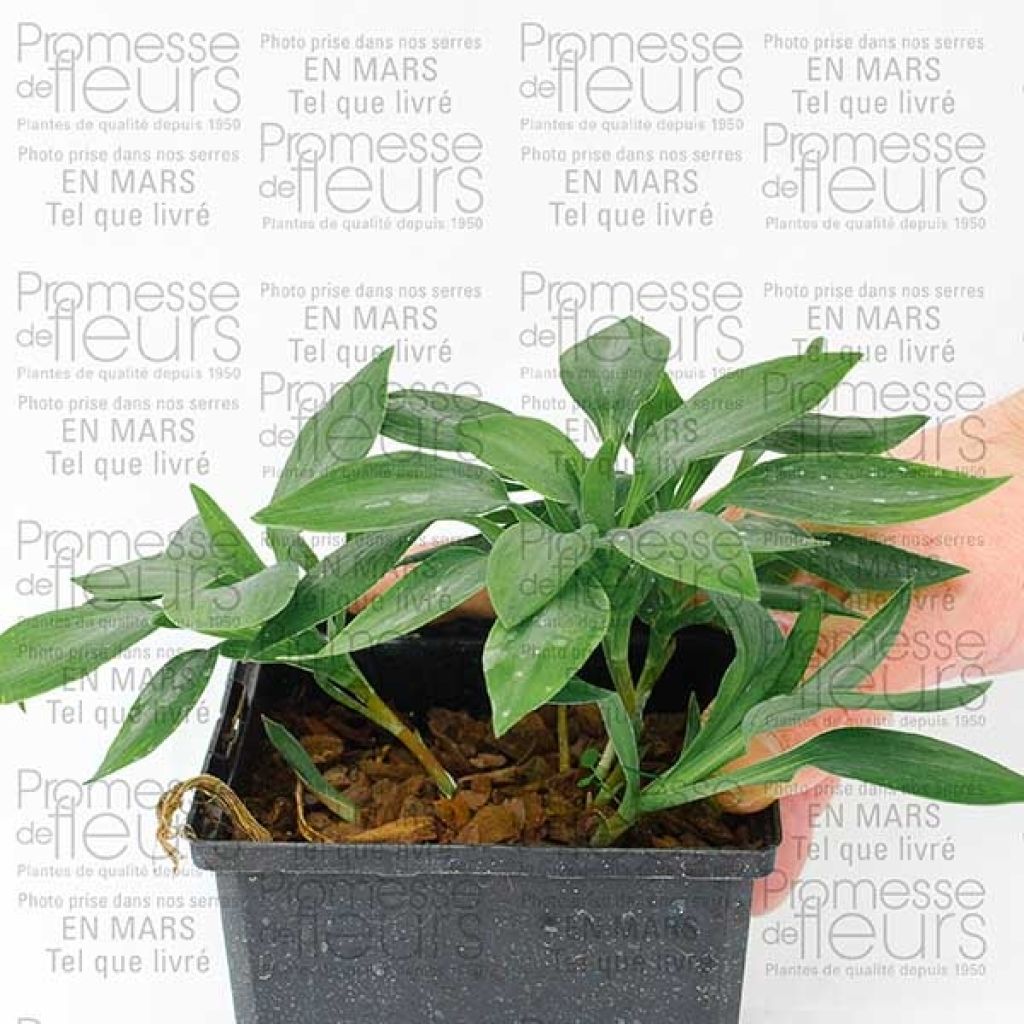

Alstroemeria Inca Ice - Peruvian Lily
Alstroemeria Inca Ice - Peruvian Lily
Alstroemeria 'Koice' INCA ICE
Alstroemère Inca Ice, Lys des Incas Inca Ice
Absolutely fabulous, still in full bloom today, 5th November. My rating: 5/5, of course!!!
viviane, 05/11/2014
Special offer!
Receive a €20 voucher for any order over €90 (excluding delivery costs, credit notes, and plastic-free options)!
1- Add your favorite plants to your cart.
2- Once you have reached €90, confirm your order (you can even choose the delivery date!).
3- As soon as your order is shipped, you will receive an email containing your voucher code, valid for 3 months (90 days).
Your voucher is unique and can only be used once, for any order with a minimum value of €20, excluding delivery costs.
Can be combined with other current offers, non-divisible and non-refundable.
Why not try an alternative variety in stock?
View all →This plant carries a 6 months recovery warranty
More information
We guarantee the quality of our plants for a full growing cycle, and will replace at our expense any plant that fails to recover under normal climatic and planting conditions.
Does this plant fit my garden?
Set up your Plantfit profile →
Description
Appelé aussi Lis des incas, l'Alstroemère ou Alstroemeria Inca Ice est un hybride très florifère, bien adapté à la fleur coupée et relativement rustique (-8/-10°C). Ses fleurs aux tons abricot rosé et crème s’ouvrent tout l’été et jusqu’aux premiers froids, sur une végétation dense, mais souple. Belle vivace de massifs ensoleillés, elle réussit également dans un grand pot sur la terrasse, pour peu que le drainage soit irréprochable et l’arrosage suivi en période sèche.
L'Alstroemeria ‘Koice’ Inca Ice appartient à la famille des Alstroémeriacées, ce cultivar est souvent commercialisé sous la marque Inca Ice™ ; elle fait partie des séries « Inca », issues d’un travail d’hybridation mené aux Pays-Bas par la maison Könst Alstroemeria, connue pour ses sélections plus compactes et plus résistantes au jardin que les variétés de serre.
La plante forme, à partir d’un rhizome charnu muni de racines tubérisées cassantes, une touffe au port dressé et souple, s’élargissant lentement par de courts rejets rhizomateux. Les tiges florales, hautes de 60 à 75 cm (jusqu'à 80 cm dans les sols riches), portent des feuilles alternes lancéolées, de 7 à 12 cm. Le feuillage est caduc à semi-persistant selon le climat. Au jardin, une touffe bien installée atteint couramment 70 cm de haut pour 60–75 cm de large. Les inflorescences en ombelles terminales rassemblent de nombreuses fleurs en entonnoir de 4 à 5 cm, aux pétales externes d'un rose abricot très pâle ; les pétales internes plus petits sont crème à jaune clair, fortement ponctués ou striés de pourpre brun ; la floraison se renouvelle de juin à septembre-octobre. La rusticité de cette variété est évaluée à −8/ −10 °C en sol léger, drainé et protégé par un paillis hivernal.
Plus vous faites de bouquets, plus vous stimulez sa floraison ! Plantez ce lys des Incas Inca Ice au soleil doux ou à mi-ombre, en sol fertile et drainé, puis arrosez régulièrement en été. Mariez ce cultivar à d'autres Alstroemeia pastel : Inca Lake, Inca Coral et Alstroemeria Inticancha White Pink Blush. Leur floraison échelonnée crée un massif plein de douceur et de raffinement. Dans un bouquet, vous pouvez mélanger ses fleurs à celles du Dahlia 'Rosario' et du rosier ‘Buff Beauty’. Coupez les tiges dès l’ouverture des premières fleurs.
Plant habit
Flowering
Foliage
Botanical data
Alstroemeria
'Koice' INCA ICE
Alstroemeriaceae
Alstroemère Inca Ice, Lys des Incas Inca Ice
Cultivar or hybrid
Other Alstroemerias
View all →Planting and care
Les alstromerias Inca Ice sont assez rustiques, jusqu'à -8/-10°C. Plantez-les aux beaux jours espacés de 15 cm, en sol allégé, mélangé de sable et de terreau. Votre sol doit être léger et travaillé profondément. Plantez-les en plein soleil, ou à mi-ombre l'après-midi, et ne les dérangez pas la première saison, paillez-les pour leur 1er hiver en pleine terre. Elles vous raviront par leur floraison continue de juin aux gelées.
Planting period
Intended location
Care
Planting & care advice
-
, onOrder confirmed
Reply from on Promesse de fleurs
Haven't found what you were looking for?
Hardiness is the lowest winter temperature a plant can endure without suffering serious damage or even dying. However, hardiness is affected by location (a sheltered area, such as a patio), protection (winter cover) and soil type (hardiness is improved by well-drained soil).

Photo Sharing Terms & Conditions
In order to encourage gardeners to interact and share their experiences, Promesse de fleurs offers various media enabling content to be uploaded onto its Site - in particular via the ‘Photo sharing’ module.
The User agrees to refrain from:
- Posting any content that is illegal, prejudicial, insulting, racist, inciteful to hatred, revisionist, contrary to public decency, that infringes on privacy or on the privacy rights of third parties, in particular the publicity rights of persons and goods, intellectual property rights, or the right to privacy.
- Submitting content on behalf of a third party;
- Impersonate the identity of a third party and/or publish any personal information about a third party;
In general, the User undertakes to refrain from any unethical behaviour.
All Content (in particular text, comments, files, images, photos, videos, creative works, etc.), which may be subject to property or intellectual property rights, image or other private rights, shall remain the property of the User, subject to the limited rights granted by the terms of the licence granted by Promesse de fleurs as stated below. Users are at liberty to publish or not to publish such Content on the Site, notably via the ‘Photo Sharing’ facility, and accept that this Content shall be made public and freely accessible, notably on the Internet.
Users further acknowledge, undertake to have ,and guarantee that they hold all necessary rights and permissions to publish such material on the Site, in particular with regard to the legislation in force pertaining to any privacy, property, intellectual property, image, or contractual rights, or rights of any other nature. By publishing such Content on the Site, Users acknowledge accepting full liability as publishers of the Content within the meaning of the law, and grant Promesse de fleurs, free of charge, an inclusive, worldwide licence for the said Content for the entire duration of its publication, including all reproduction, representation, up/downloading, displaying, performing, transmission, and storage rights.
Users also grant permission for their name to be linked to the Content and accept that this link may not always be made available.
By engaging in posting material, Users consent to their Content becoming automatically accessible on the Internet, in particular on other sites and/or blogs and/or web pages of the Promesse de fleurs site, including in particular social pages and the Promesse de fleurs catalogue.
Users may secure the removal of entrusted content free of charge by issuing a simple request via our contact form.
The flowering period indicated on our website applies to countries and regions located in USDA zone 8 (France, the United Kingdom, Ireland, the Netherlands, etc.)
It will vary according to where you live:
- In zones 9 to 10 (Italy, Spain, Greece, etc.), flowering will occur about 2 to 4 weeks earlier.
- In zones 6 to 7 (Germany, Poland, Slovenia, and lower mountainous regions), flowering will be delayed by 2 to 3 weeks.
- In zone 5 (Central Europe, Scandinavia), blooming will be delayed by 3 to 5 weeks.
In temperate climates, pruning of spring-flowering shrubs (forsythia, spireas, etc.) should be done just after flowering.
Pruning of summer-flowering shrubs (Indian Lilac, Perovskia, etc.) can be done in winter or spring.
In cold regions as well as with frost-sensitive plants, avoid pruning too early when severe frosts may still occur.
The planting period indicated on our website applies to countries and regions located in USDA zone 8 (France, United Kingdom, Ireland, Netherlands).
It will vary according to where you live:
- In Mediterranean zones (Marseille, Madrid, Milan, etc.), autumn and winter are the best planting periods.
- In continental zones (Strasbourg, Munich, Vienna, etc.), delay planting by 2 to 3 weeks in spring and bring it forward by 2 to 4 weeks in autumn.
- In mountainous regions (the Alps, Pyrenees, Carpathians, etc.), it is best to plant in late spring (May-June) or late summer (August-September).
The harvesting period indicated on our website applies to countries and regions in USDA zone 8 (France, England, Ireland, the Netherlands).
In colder areas (Scandinavia, Poland, Austria...) fruit and vegetable harvests are likely to be delayed by 3-4 weeks.
In warmer areas (Italy, Spain, Greece, etc.), harvesting will probably take place earlier, depending on weather conditions.
The sowing periods indicated on our website apply to countries and regions within USDA Zone 8 (France, UK, Ireland, Netherlands).
In colder areas (Scandinavia, Poland, Austria...), delay any outdoor sowing by 3-4 weeks, or sow under glass.
In warmer climes (Italy, Spain, Greece, etc.), bring outdoor sowing forward by a few weeks.






























